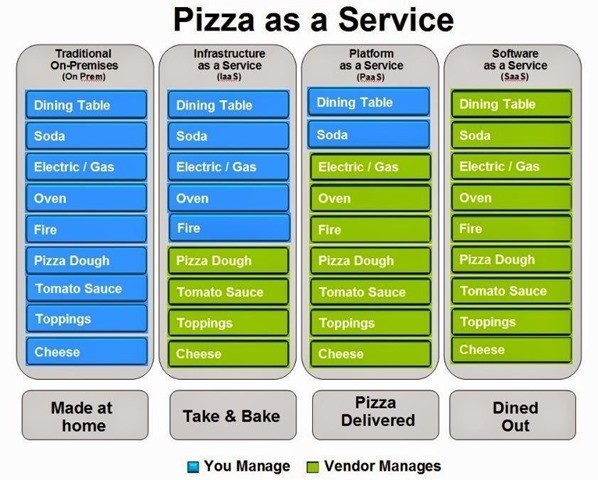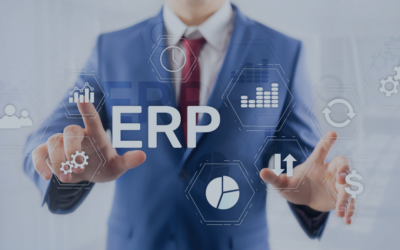If you have discussed moving your IT infrastructure, operations, or software to a third party provider, you’ve heard terms like Infrastructure as a Service (IaaS), Platform as a Service (PaaS), and Software as a Service (SaaS) used to describe what could be provided. If you already understood the terms or received a satisfactory explanation of the various models of cloud computing, then please see below for humor value only. If you didn’t, or the terms still seem nebulous (pun intended) to you then I hope the metaphor that follows will help make understanding the different types of cloud computing easier. I love pizza and generally find that to be a commonly held position and more important for this post, something that everyone understands. Pizza preparation and consumption will be the metaphor for our explaining today’s types of cloud computing. For the sake of clarity and brevity, I will skip over delivery options for the pizza, meaning public, private or hybrid cloud delivery.
Types of Cloud Computing: A Brief Overview
- On premise—You make the pizza at home from ingredients you buy and process. With this traditional model of IT, your servers, networking gear, IT staff, and everything reside in your location(s) and your company has full responsibility for the operation. You need more pizzas because some customers are not getting full meals, you put in more ovens, cooks, and staff. You want gluten free vegan pizza, you change your suppliers and recipes and you are done.
- Infrastructure as a Service (IaaS)—You pay for the ingredients, prepare and cook the pizza, and of course eat the pizza. The ovens, kitchen, and dishwashers are the responsibility of your service provider. You may own them or they could be provided but the service provider as defined by the Service Level Agreement (SLA), is responsible that everything is operating “properly”. The server(s), storage, and network and similar is the end of their responsibility and the beginning of your responsibility. This is the traditional form of outsourced IT where the division of responsibility leads to lots of finger pointing since both poor ingredients or faulty equipment can produce a bad pizza. It is often unclear where responsibility falls, but in IT you learn there is always room under the bus for one more.
- Platform as a Service (PaaS)—You provide a place to consume the pizza, get to pick from broad types of pizza (pan, thin, Sicilian) and toppings from a menu, and anything else needed like condiments and paper products. In this case, the provider already has lots of similar customers, has responsibility for nearly everything, and delivers on the SLA by not allowing custom orders. You are allowed only small variations in the pizza, you can decide what applications (pizza style) will operate and some elements of how they work (topping choices), but your pizza is going to be very similar to every other pizza produced.
- Software as a Service (SaaS)—You are served the pizza and whatever else you need is provided. In this model, everything is already defined and while you can choose from various options, you have no say in to how the options are delivered or produced. You may be able to ask for light sauce or extra cheese, but the pizza on the menu is what you ordered and that is what you will receive. The most common example of this is Office 365 where the mail servers, malware scanning, SPAM filtering, and end user mailboxes are all provided, managed, and maintained by Microsoft. As the consumer you simply enjoy the meal without having to worry about any details, except the bill.
Check out the pizza as a service model graphic below for more information on the types of cloud computing available today.

If you are considering moving from the traditional on premise IT model to some type of cloud, please contact Intelligent Technologies so that we can help you find the right type of provider for your pizza order. Interested in exploring some of the cloud solutions we offer? Visit this webpage.



